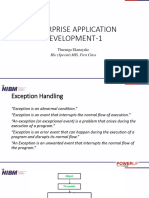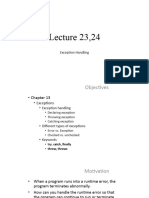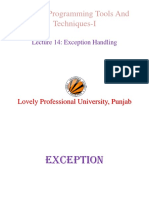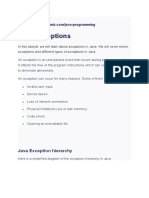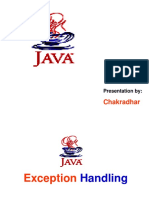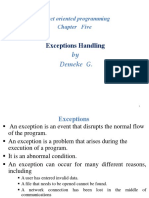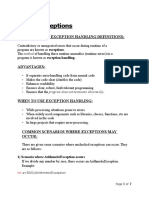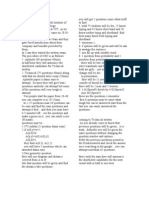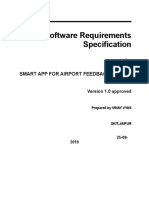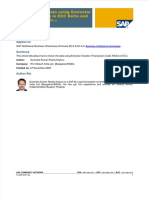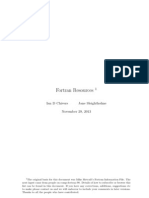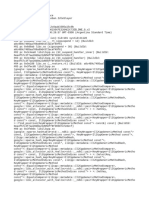0% found this document useful (0 votes)
9 views13 pagesException Handling
The document provides an overview of exception handling in programming, explaining the difference between checked and unchecked exceptions. It details how to use try-catch and finally blocks to manage exceptions, as well as the keywords 'throw' and 'throws' for handling exceptions in method signatures. Additionally, it includes a summary of key concepts and keywords related to exception handling.
Uploaded by
pmsaravanan28Copyright
© © All Rights Reserved
We take content rights seriously. If you suspect this is your content, claim it here.
Available Formats
Download as PDF, TXT or read online on Scribd
0% found this document useful (0 votes)
9 views13 pagesException Handling
The document provides an overview of exception handling in programming, explaining the difference between checked and unchecked exceptions. It details how to use try-catch and finally blocks to manage exceptions, as well as the keywords 'throw' and 'throws' for handling exceptions in method signatures. Additionally, it includes a summary of key concepts and keywords related to exception handling.
Uploaded by
pmsaravanan28Copyright
© © All Rights Reserved
We take content rights seriously. If you suspect this is your content, claim it here.
Available Formats
Download as PDF, TXT or read online on Scribd
/ 13


























